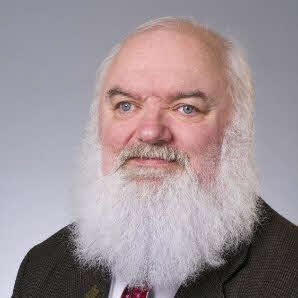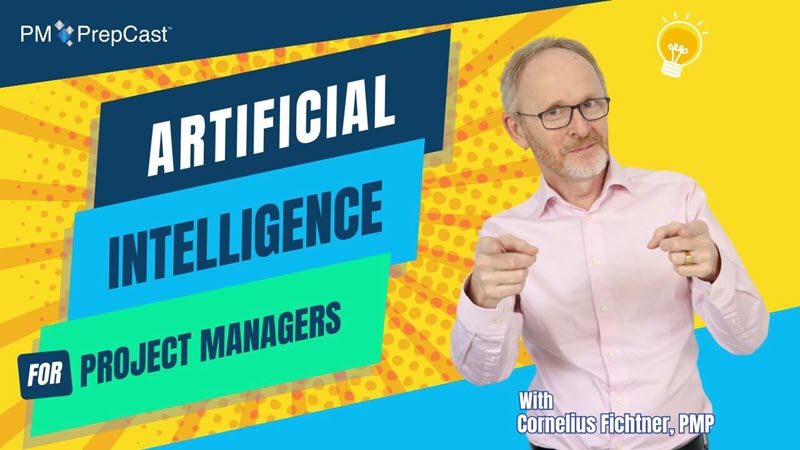Episode 374: Benefit Management for Projects in Action (Premium)
This episode is reserved for subscribers of the Premium Podcast. Learn how to subscribe to the Premium Podcast to access this interview and transcript...
For your Project Management Professional (PMP)® exam use PMP exam prep on your phone with The PM PrepCast:

When we last spoke with Dave L Davis (https://www.linkedin.com/in/dldavispmp) we learned about the basics of benefits realisation and benefits realisation management? We discussed the benefits management process and focused on the important aspect of how all of this fits into project benefits management.
Now that we understand the theory of benefits realization management it’s time to take the next step and ask “How do we actually do all of this”. Luckily, Dave has a lot of experience in applied benefit management and he happily agreed to this second interview, so that we can take a look at a case study.
You’ll hear how we project managers are involved in the overall process, the importance of engaging stakeholders, how to ensure alignment between benefit management and organizational strategy, and of course, we will also look at metrics.
Episode Transcript
Below are the first few pages of the transcript. The complete transcript is available to Premium subscribers only.
Podcast Introduction
Cornelius Fichtner: Hello and welcome to this Premium Episode No.374. I am Cornelius Fichtner. Premium means that this interview is reserved for you our Premium subscribers so thank you very much for joining us today for supporting the podcast with your subscription. Please don’t forget, you get to earn PDUs for listening. So please visit Project Management Podcast™ at www.project-management-podcast.com/pdu for all the details and of course tell your PMP and PMI ACP or PGMP friends about all the PDUs they can earn.
When we last spoke with Dave Davis, we learned about the basics of benefits realization and Benefits Realization Management. We discussed the benefits management process and focused on the important aspect of how all of this fits into Project Benefits Management. Now that we understand the theory of benefits realization management, it’s time to take the next step and ask, “How do we actually do all of this?”
Well, luckily, Dave has a lot of experience in Applied Benefit Management and he happily agreed to this second interview so that we can take a look at a case study. You’ll hear how we project managers are involved in the overall process, the importance of engaging stakeholders, how to ensure alignment between Benefit Management and Organizational Strategy and of course we will also look at metrics. And so, for your own personal benefit, please enjoy the interview.
Female Voice: Project Management Podcast Feature Interview. Today with Dave L. Davis, Project Manager for General Electric Brilliant Factory.
Podcast Interview
Cornelius Fichtner: Hello Dave, welcome back to the Project Management Podcast™ at www.pm-podcast.com
Dave Davis: Thank you for having me.
Cornelius: We want to see how Benefits Management works in action but before we get to that, just to set the stage for everyone, would you please remind us sort of what Benefits Management is, how it affects us project managers and when and how we PMs get actually involved in Benefits Management during our projects?
Dave: Ok well, Benefits Management is a structured/disciplined approach to be able to determine why the company should make an investment, how can we measure or realize this investment and are we doing the right things? That’s probably the fundamental core of Benefits Management is to make sure that we’re spending our resources, human, financial, material resources on the right projects. And so, what Benefits Management consist of is a couple of different stages: 1. aligning what we’re trying to do with the strategic intent. The Benefits Management is actually within the program management domain of the PMI Portfolio Program project structure and there’s five pillars or domain within that program management. One of them is for probably for most strategic alignment is what we’re trying to do, aligned with the strategic intent of the business. Then there’s another piece in there which is stakeholder engagement, do we have the right stakeholders involved and engaged? Benefits Management is really a lot of work on getting the stakeholders to understand what benefits are being derived, how are we going to measure them through a KPI. Another domain is stakeholder management and that’s getting the business members responsible organizations, etc. to understand what the future states is going to be the benefit of going there, what are KPIs are to measure, how we get there, a time frame and a road map but also that we get that ownership.
The next part fits into a governance, really a decision-making model. How are we going to make decisions based on benefits and that’s one of the key cultural shifts that needs to occur in benefits realization is that new decision model where the question isn’t as much time, cost, schedule but what is the impact to the benefit? And there’s a real tight alignment so don’t think I’m saying something along the line that we’re eliminating the triple constraint. We’re using the triple constraint at a deeper level in order to find that ultimate benefit decision. And then there’s a basic project life and program life-cycle piece to this, which is Identification of benefits, start to do the work monitoring and control. And then the fifth domain of the program management standard is Benefits Realization which gets into getting this investment back. What are we looking for in a time frame and also being able to adjust behaviors based on why the benefits are being realized. And I want to stress this point: Benefits Management is not just financial tangible benefits. It’s a lot of organization that look at intangibles –things such as employee satisfaction so that there can maybe employee survey results. Net promoter score, what are customers likely to say about us? Just somebody else to use our products. The idea that Benefits Management is stretching long beyond the financial return or the ROI but bringing in company culture, company strategic objectives, etc. etc. So, what I’ve been involved in inside several organizations is taking that academic perspective per se and putting it into practices in order to realize benefits back to the organization.
Cornelius: Alright, thank you. With that out of the way, let’s take a look at Benefits Management in action and what better way than to do that than through a case study. Tell us a little bit about the case study. What industry was it in?
Dave: They’re in the financial services insurance industry.
Cornelius: So, pretty large company.
Dave: It was a very large company. It’s a Fortune 100 company.
Cornelius: Oh OK. There you are.
Dave: It’s very large and they often advertise—on TV [laughs]
Cornelius: How many people were directly involved in the Benefits Management effort?
Dave: Directly involved…I was part of a team in…I was a titled Executive Adviser but we’re a small team of seven people to define the Benefits Management practices. As far as our initial introduction and etc. we had four, five large programs that we’re doing. We were in the neighborhood of 140 people that were involved in that and each program probably has in the neighborhood of 15-25 people that have various areas and in the financial services, you can imagine that a group is dealing with some sort of regulatory program may have a different set of stakeholders. For example, there may be more people in the legal department per se than something in a group that may be involved in some sort of claims adjustment program. So, to give the mix as a business should be is going to depend on what the program initiatives are.
Cornelius: Who was the sponsor of this and why did he or she want to pursue Benefits Management?
Dave: Well, the sponsor...this is one of the little problems. The sponsor was actually the IT organization and there’s a portfolio management office that decide to pursue this and it was a little bit of the tail-wagging the dog. The more successful organizations I’ve seen with Benefits Management has been enterprise-wide. This being IT-focused, focused mainly on the delivery of IT products and services. It was driven by an IT program manager that then got their customers and sponsors together. The sponsor was usually whoever provided the original business case for the investment which often times was a team within a business unit itself that would look what could be major strategic objectives were for the year and decide to pursue those. It started out maybe at a high level such as we were going to reduce SG in the expenses. That started the program and then we started to develop more and what the price of that would be, etc. etc. This is a large company so there were multiple programs that’s in the pipeline that needed to be vetted and evaluated, etc. The numbers that actually made the decision of when a program became real was probably in the neighborhood of 50 people throughout an IT organization and with some of the governance of the IT from some finance people.
Cornelius: Did you have any insights into the budget and are you allowed to talk about that?
Dave: I really can’t talk about that too much but they were in tens of millions and hundreds of millions or the cost over the life of the program. It could be a 570 program and the benefit of course were more than what we project that we hire.
Cornelius: When did they start the effort?
Dave: I joined the organization in 2014. They actually started doing some work in 2012 there was probably 6-8 months of individual selling the concept of Benefits Management practices and bringing discipline around it and there was a part of another big thrust within this organization to take a disciplined approach to Organizational Change Management and we really started to see some synergy between OCM, change management and BMP, Benefits Management Practices.
Cornelius: Well, let’s fast forward to today, would you say that the effort is a success or is on the way towards a success?
Dave: It is a success. There have been a couple of programs and they have gone into the second or third year of it. There’s still monitor to control benefits. They’ve been developed and transitioned to operation that’s no longer being monitored by the IT program manager. There is more involvement of the operations side to be able to manage that realization longer term. Back to the decision model, I saw more and more discussions around that decision model and using benefits as a criteria. I personally have left that organization. I’m in another one now so I can’t speak to exactly how it is today but I do keep in touch with a couple of people there and they’re gainfully employed, keeping very busy, and they’ve expanded it into some other business units within the last six months so it is growing.
Cornelius: Excellent. The listeners here and I, myself, we are project managers so let’s look at what interest us and project managers most? How were the project managers involved in this habit?
Dave: They’re getting much better. Getting benefits is part of the program or the project charter. These are the benefits that you’re going to be delivering. These are the outcomes and capabilities. I should back up because there’s actually a benefits modeling process that identify the benefit, the outcome and the capability. I know there’s a lot of people that they get really hung up on the definition of outcome or capabilities, I’m not going to try and define those definitively—kind of the basic broadbrush of what we were defining it as but outcome is a specific functionality within an application or process while capability is overall the business endowed to something which may be there’s certain functionality in two or three applications that were together contributig to that capability. The project charters, in getting the project managers involved was to have an understanding of the outcomes and capabilities that they were to deliver and the tactical product that were being project managed. But with the understanding that this outputs capability fed an overall benefits structure, these were the KPIs that we’re measuring that and what you’re doing here, this will actually be the behaviors or capabilities that drive these KPIs so if you think of a thermostat… a thermostat you set to certain number to drive the temperature in your house. So, they were given that information that the thermostat is what you’re going to be driving to and you know how that if you turn it to the left it’s going to be colder, if you turn it to the right it’s going to be warmer. You need to make sure that your project is delivering that thermostat to be able to deliver the overall comfort. That may be a weak analogy I’m doing on the fly [laughs] Maybe I shouldn’t go there but that was the idea, that the project managers from their project perspective really had an understanding of what they were delivering, how are they going to be measured to the overall Benefits Realization and where fit in this road map and really try to focus them on the tactical delivery of their project charter.
Cornelius: In our first interview, we talked about three areas: there was the plan/model the benefits, align the plan with stakeholders, and realize the benefits. Was the effort from this particular case study using this approach?
Above are the first few pages of the transcript. The complete PDF transcript is available to Premium subscribers only.
PDUs: Business Acumen, Project Management Industry Reports, Benefits realisation, Benefits realization, Benefits realisation management, Benefits realization management
- Last updated on .


